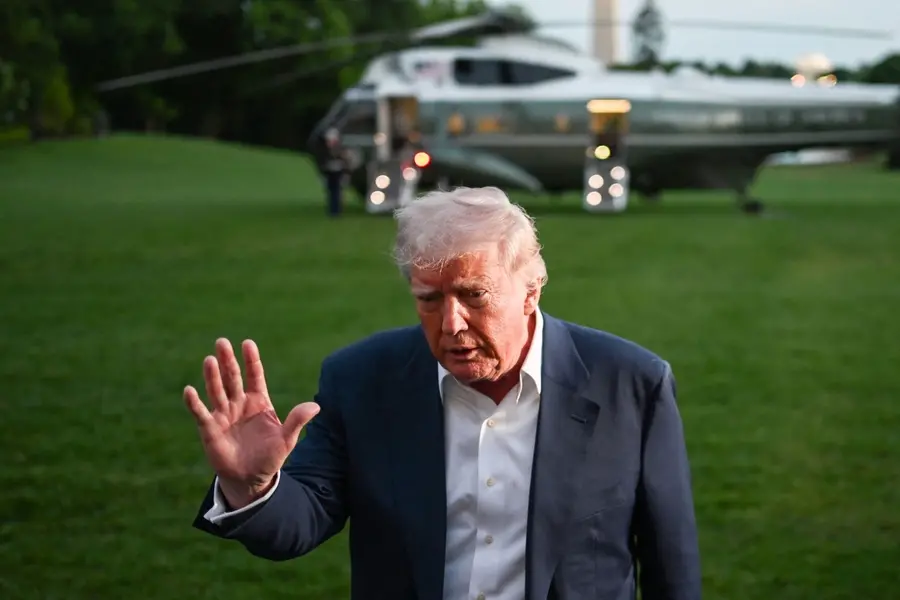In a striking move that could reshape the global entertainment landscape, U.S. President Donald Trump announced plans to impose a 100% tariff on films produced outside the United States. This decision marks a significant escalation in his administration’s trade policies, extending restrictive measures into the entertainment sector for the first time.
Trump authorized the U.S. Trade Representative and the Department of Commerce to initiate the process of enforcing this tariff on foreign-made movies entering the U.S. market. The president framed the move as a necessary step to counteract what he described as the “very fast death” of the American movie industry, attributing the decline to a “concerted effort” by other countries that offer incentives to lure filmmakers and studios away from the U.S. He characterized these foreign incentives as a “National Security threat” and accused overseas productions of serving as vehicles for messaging and propaganda. On his social media platform, Truth Social, Trump emphatically stated, “WE WANT MOVIES MADE IN AMERICA, AGAIN!”
This announcement follows a series of tariffs Trump has imposed since returning to the White House in January, aimed at protecting U.S. manufacturing and jobs. However, the introduction of tariffs on films represents a novel approach, as the entertainment industry has traditionally been less affected by such trade measures. The move raises complex questions about enforcement, given the international nature of modern film production. Many Hollywood movies involve shooting locations, post-production, and financing across multiple countries, making it unclear how the tariff will be applied or how films will be valued for tariff purposes. It is also uncertain whether the tariff will apply retroactively to completed but unreleased films or only to future productions.
However, the United States stands as a dominant force in the global film industry, not only culturally but also economically. According to trade data, the U.S. exports more than three times the value of film-related goods and services compared to what it imports, underscoring its strong position as a net exporter in this sector. This economic strength is reflected in the box office performance, where no foreign-language film ranked among the 50 highest-grossing movies in the U.S. last year, and the top 10 highest-grossing films worldwide were all released by U.S. studios. This export surplus highlights the global appeal and commercial success of American films, reinforcing the rationale behind the administration’s push to protect and revitalize the domestic movie industry through tariffs on foreign-made films.
Prior to this tariff announcement, Trump had appointed Hollywood figures Jon Voight, Mel Gibson, and Sylvester Stallone as special ambassadors to promote U.S. film industry interests. These envoys have advocated for expanded federal tax incentives to boost domestic film and television production, including proposals to broaden existing tax credits and reinstate expired incentives. While these discussions did not initially include tariffs, Trump introduced the subject during private meetings at his Mar-a-Lago Club, signaling a broader strategy to revitalize Hollywood’s economic footprint.
The president’s framing of foreign film productions as a national security concern underscores a growing trend of viewing cultural products through the lens of geopolitical competition. Trump’s assertion that foreign films constitute propaganda highlights the administration’s intent to prioritize American cultural output and economic benefits derived from the film industry.
Industry experts and stakeholders face uncertainty about the practical implications of this tariff. The globalized nature of film production means that many projects are multinational collaborations, which could complicate compliance and enforcement. For example, blockbuster franchises like “Mission: Impossible” routinely film across various countries, blending domestic and international resources. The tariff could disrupt existing production models and supply chains, potentially increasing costs for studios and consumers alike.
The entertainment sector’s response remains to be seen, but the potential impact on international trade relations and the global film market is significant. This move could provoke retaliatory measures from other countries, further intensifying trade tensions. It also comes amid broader debates about the role of government incentives in attracting film production and the balance between protecting domestic industries and participating in the global economy.
President Trump’s directive to impose a 100% tariff on foreign-made films is a bold attempt to stimulate the U.S. movie industry by discouraging overseas production and encouraging studios to keep projects within American borders. Whether this strategy will succeed in reversing the perceived decline of Hollywood remains uncertain, but it undeniably signals a new chapter in the intersection of trade policy and cultural industries.
This tariff initiative represents a significant shift in U.S. trade policy, extending protectionist measures into the cultural domain with far-reaching implications for the film industry and international trade relations.

